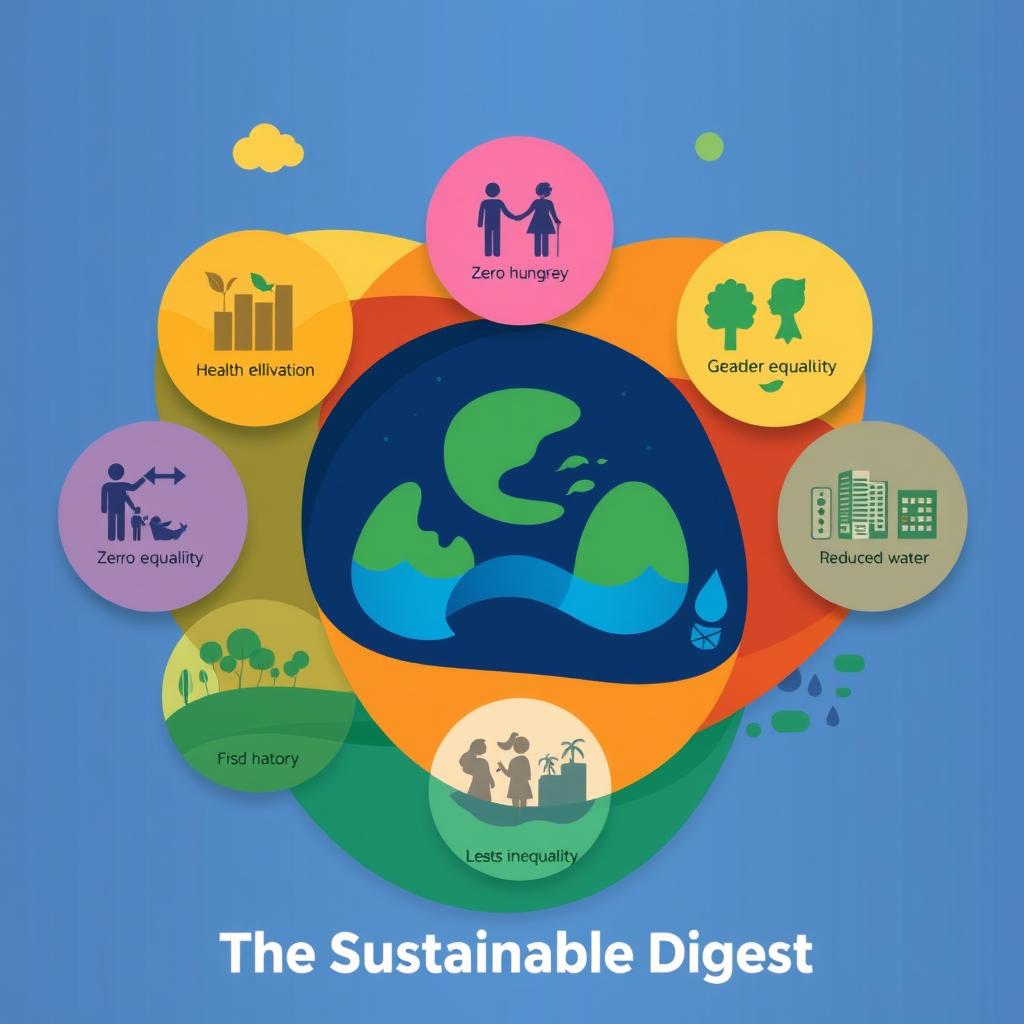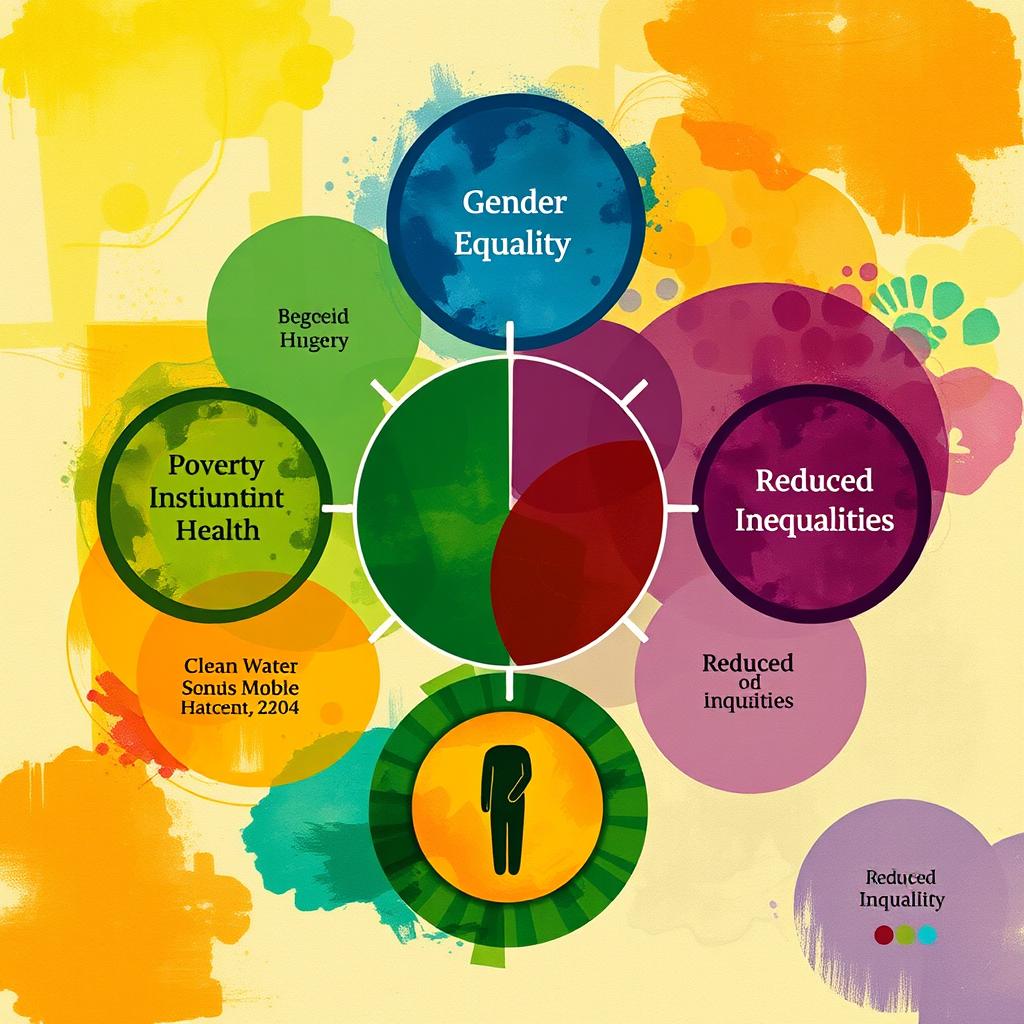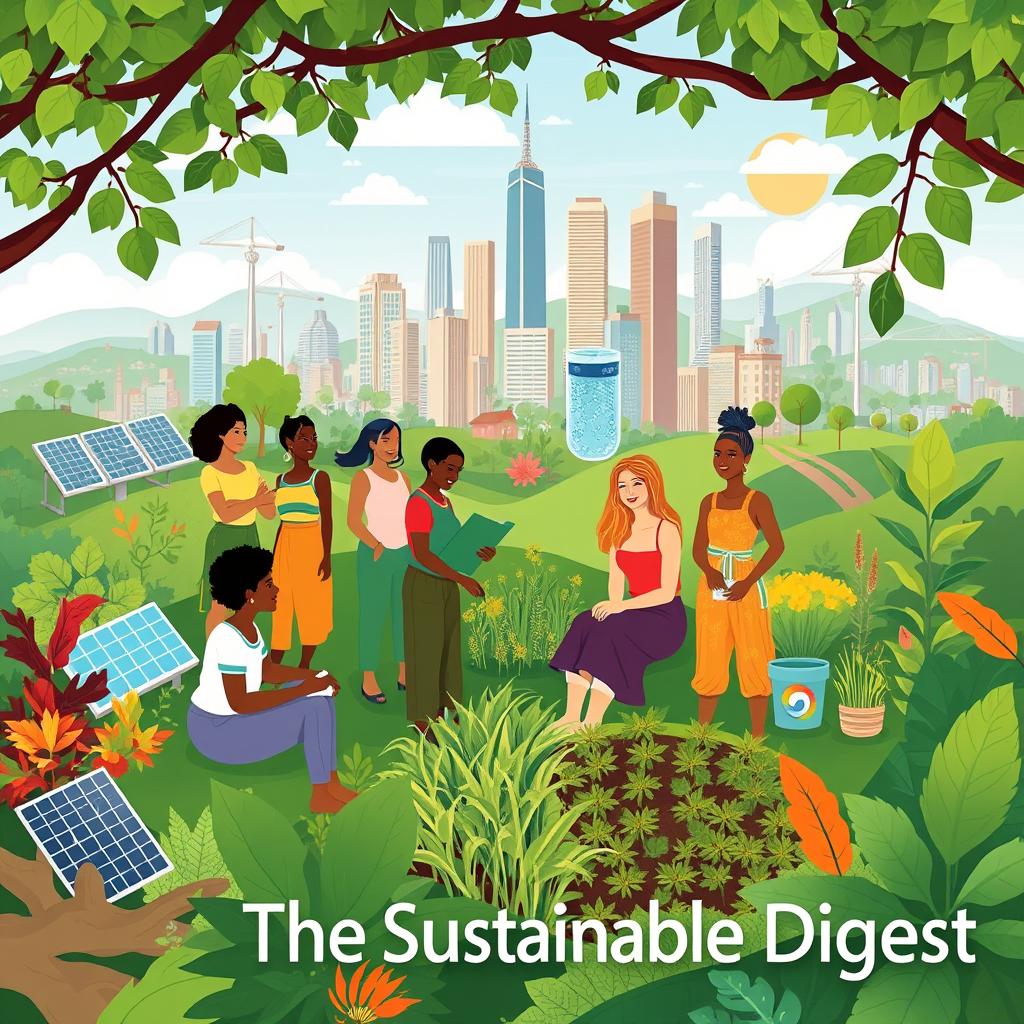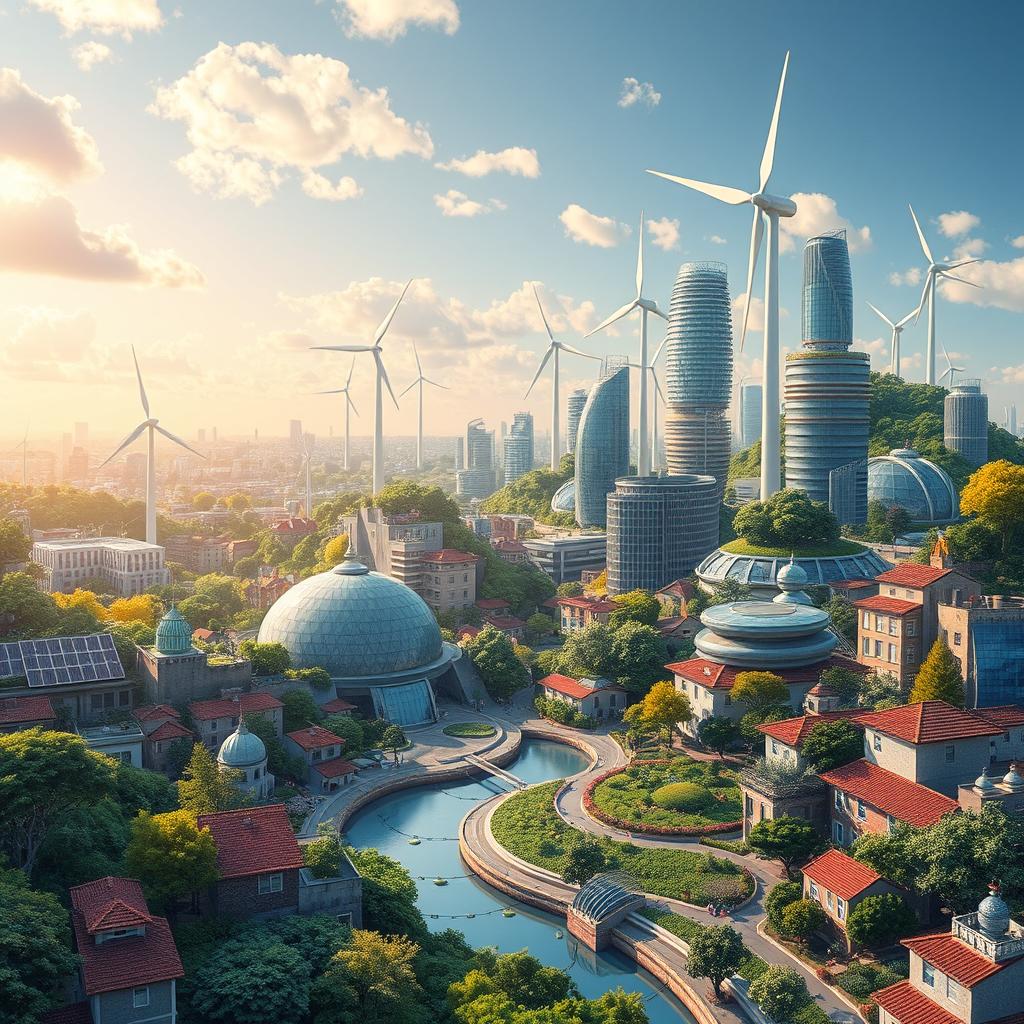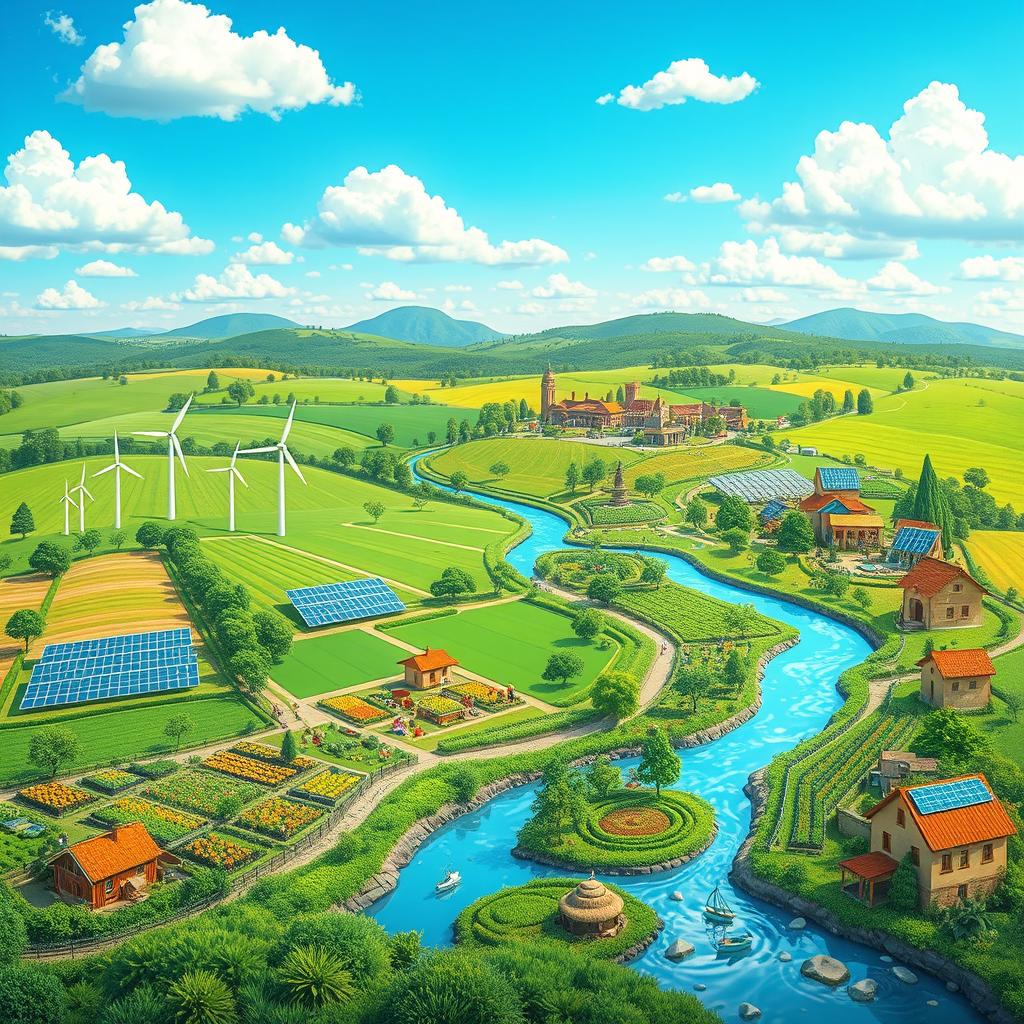
In March, especially during the spring equiox, brings a series of important international days that highlight our global challenges and achievements. From the International Day of Happiness to World Meteorological Day, these observances between 2024 and 2025 reflect our ongoing journey toward meeting the UN Sustainable Development Goals. These international days serve as crucial reminders of our collective responsibility to protect our planet and improve human wellbeing, with each observance connecting directly to several SDGs, including clean water, climate action, and reduced inequalities.

The period between the years 2024 and 2025 has seen notable shifts in how we approach these celebrations. The International Day of Forests and World Water Day have gained increased attention as climate concerns intensify. Similarly, the International Day for the Elimination of Racial Discrimination continues to evolve as societies grapple with persistent inequalities. Nowruz celebrations worldwide blend traditional cultural expressions with modern sustainability practices.
These observances reflect both our progress and shortcomings in creating a more sustainable world. World Water Day highlights the ongoing water crisis affecting billions, while the International Day of Happiness measures our success beyond economic indicators. Each day offers an opportunity to assess where we stand on the UN Sustainable Development Goals and what actions we must take to build a more equitable future.
Recent Retrospect and Current Reflection

The intersection of global observances and sustainability efforts has shown notable shifts between 2024 and 2025. These changes reflect evolving priorities in environmental protection, social equality, and cultural preservation as communities worldwide adapt to pressing challenges.
2024 vs. 2025 Observations
The International Day of Happiness saw a significant shift in focus from 2024 to 2025. Last year emphasized community resilience, while 2025 has connected happiness more directly to sustainable practices and resource conservation.
The International Day for the Elimination of Racial Discrimination evolved from awareness campaigns in 2024 to concrete policy implementations in 2025. This year’s observance has emphasized environmental justice as a crucial component of racial equality.
Nowruz celebrations in 2025 highlighted traditional ecological knowledge, compared to 2024’s broader cultural focus. The International Day of Forests and World Water Day both saw increased urgency in 2025, with stronger calls for reducing waste and optimizing resource use.
World Meteorological Day 2025 placed greater emphasis on community-based climate adaptation strategies than the previous year’s technology-focused approach.
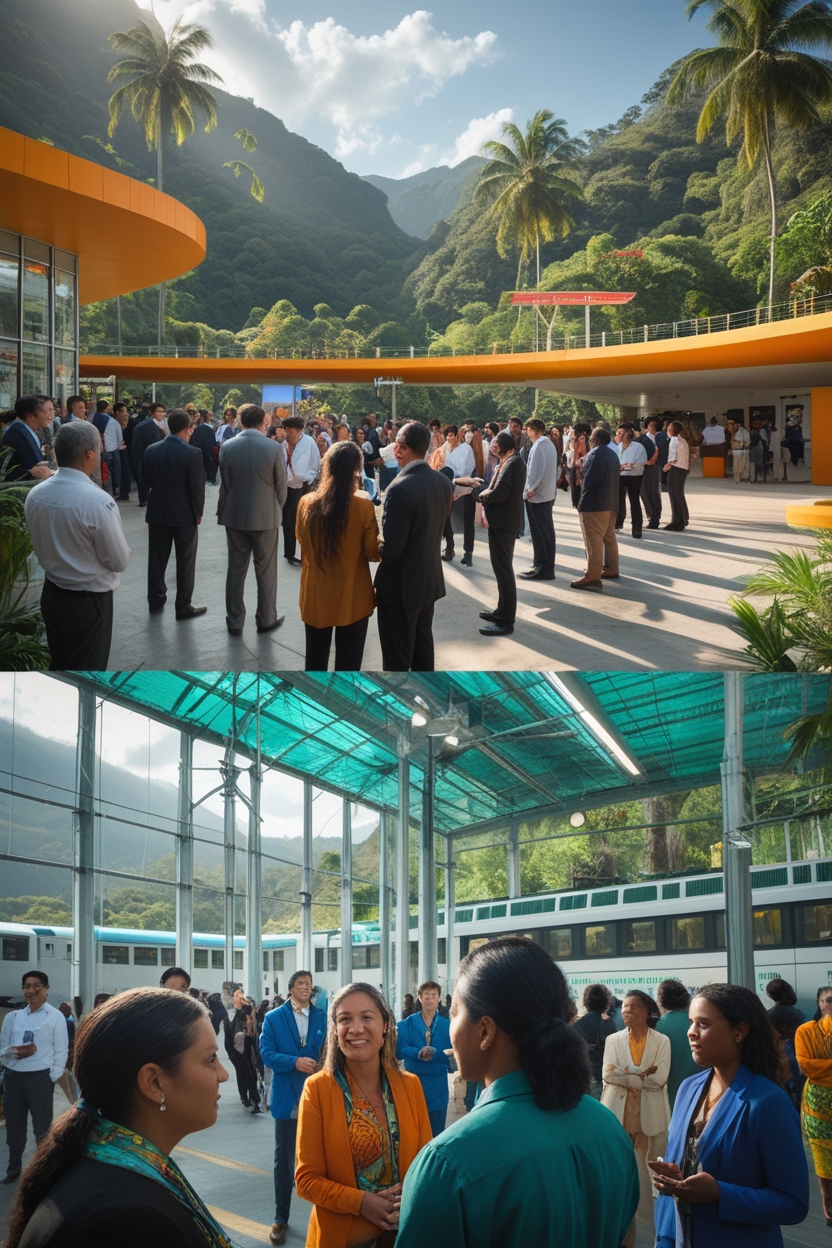
Analyzing Trends and Developments
Three key trends have emerged between 2024 and 2025:
- Integration of sustainability – All international observances now explicitly connect to sustainable development goals, regardless of their primary focus.
- Action over awareness – Events have shifted from raising awareness to promoting specific actions. This reflects the growing understanding that learning from environmental missteps must lead to corrective measures.
- Personal responsibility – There’s increased emphasis on individual choices alongside institutional change. This aligns with emerging research on personal sustainability science that examines subjective experiences.
Corporate involvement has also evolved, with companies like Apple highlighting their use of recycled and renewable materials in conjunction with these international days, rather than merely sponsoring events as seen in 2024.
International Day of Happiness
The International Day of Happiness celebrates the pursuit of happiness as a fundamental human goal and recognizes happiness as a universal human right. Observed annually on March 20th, this day emphasizes the connection between happiness and sustainable development.
Theme and Celebrations in 2024
The 2024 International Day of Happiness focused on the theme “Happiness for All, Forever.” This theme highlighted the importance of creating happiness that is inclusive and sustainable for future generations.
Celebrations worldwide included virtual happiness workshops, community service projects, and social media campaigns using #HappinessDay. Many organizations promoted the connection between happiness and sustainable development, emphasizing how personal well-being contributes to global goals.
The United Nations encouraged countries to implement policies that balance economic growth with social and environmental needs. Schools participated by conducting happiness surveys and teaching students about the science of well-being.
Several cities organized “happiness walks” and outdoor activities to promote the link between nature, physical activity, and mental health.
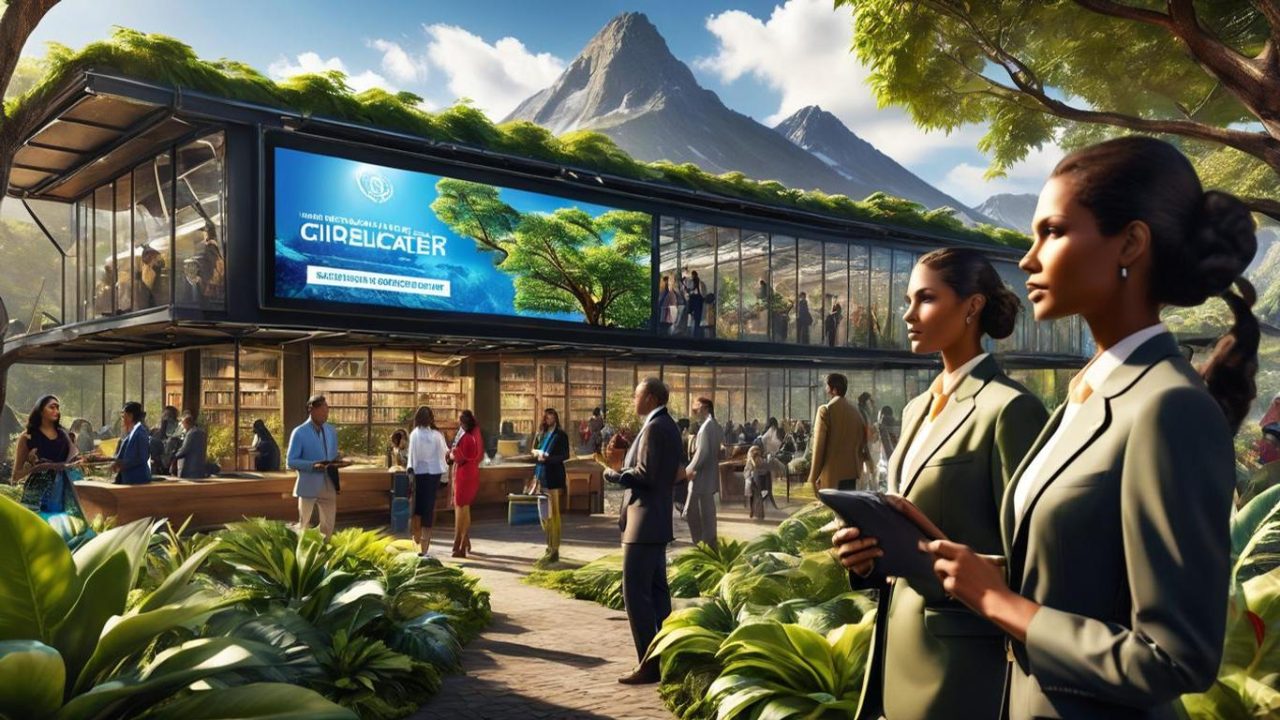
Theme and Celebrations in 2025
The 2025 International Day of Happiness embraces the theme “Connected Happiness,” highlighting that lasting happiness comes from caring for each other and feeling connected. This theme acknowledges the importance of community bonds in fostering both individual and collective well-being.
Celebrations in 2025 feature increased digital connectivity through global virtual happiness summits connecting people across continents. Community potluck dinners and neighborhood gatherings are being organized in many locations to strengthen local bonds.
Many countries are using this occasion to announce new mental health initiatives and happiness-focused policy reforms. Educational institutions are implementing “happiness curricula” that teach emotional intelligence and relationship-building skills.
Interactive public art installations in major cities invite citizens to contribute to collective expressions of joy and connection, creating shared experiences that enhance community bonds.
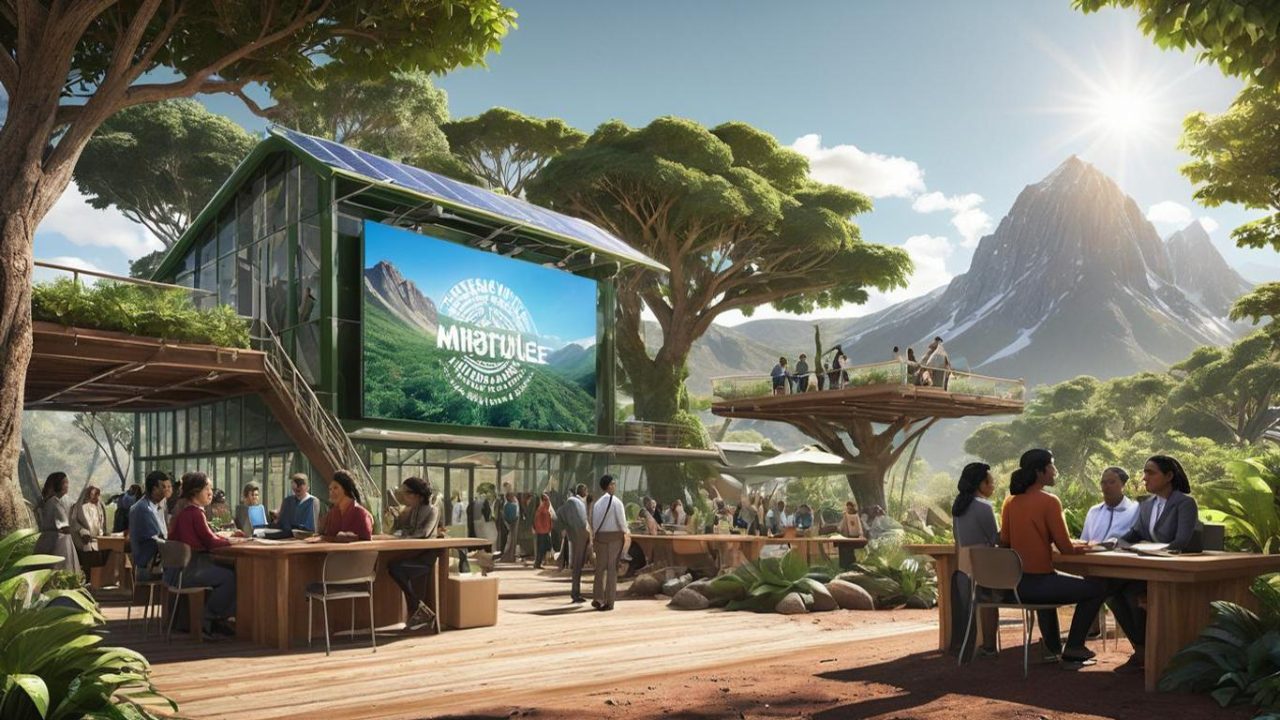
Influence on Well-being and Sustainability
The International Day of Happiness has significantly influenced global perspectives on well-being and sustainability. Countries increasingly recognize that happiness metrics deserve consideration alongside economic indicators when measuring national progress.
The day has prompted more nations to adopt the balanced approach to economic growth advocated by the UN, which promotes sustainable development and poverty eradication. This shift represents a move away from purely GDP-focused development models.
Research sparked by this observance shows that happier societies tend to make more environmentally sustainable choices. The connection between personal happiness and sustainable living habits continues to strengthen.
Companies increasingly implement workplace happiness initiatives, finding that happy employees are more productive and innovative. These programs often include sustainability components, creating a positive feedback loop between employee well-being and environmental responsibility.
The day has especially raised awareness about happiness equality, highlighting the importance of ensuring all people have access to the conditions that support well-being.
International Day for the Elimination of Racial Discrimination

The International Day for the Elimination of Racial Discrimination marks the anniversary of the 1960 Sharpeville tragedy where police killed 69 peaceful demonstrators. This important observance, held annually on March 21, highlights global efforts to combat racism and promote equality through different themes and initiatives each year.
2024 Initiatives and Impact
In 2024, the International Day focused on the theme “A Decade of Recognition, Justice, and Development.” This marked the 60th anniversary of the International Convention on the Elimination of All Forms of Racial Discrimination (ICERD), adopted in 1965.
The United Nations emphasized reflection on progress while acknowledging ongoing challenges. Organizations worldwide hosted virtual forums and community dialogues to discuss systemic racism and its impacts.
Many countries introduced new educational resources to help schools address racial discrimination. These materials focused on age-appropriate content for students to understand historical context and modern implications.
Digital campaigns reached millions through social media, featuring personal stories and calls to action. The hashtag #FightRacism trended globally, creating broader awareness and engagement.

2025 Efforts and Progress
The 2025 observance builds on previous momentum with the theme “From Awareness to Action: Building Sustainable Anti-Racism Frameworks.” This approach aligns with several UN Sustainable Development Goals, particularly SDG 10 (Reduced Inequalities) and SDG 16 (Peace, Justice and Strong Institutions).
New initiatives in 2025 include:
- Community Resilience Programs: Funding for grassroots organizations fighting discrimination
- Corporate Accountability Standards: Guidelines for businesses to create inclusive environments
- Digital Platform: Centralized resource sharing across countries and organizations
The International Day for the Elimination of Racial Discrimination in 2025 emphasizes measurable outcomes rather than symbolic gestures. More countries have committed to reviewing and reforming institutional policies that perpetuate racial inequalities.
Youth participation has significantly increased, with student-led initiatives present in over 75 countries. This represents a 40% growth from 2024 involvement rates.
International Day of Nowruz

Nowruz, which means “new day,” marks the arrival of spring and represents renewal across many cultures. The celebration has evolved in its global recognition while maintaining its core values of peace, harmony with nature, and cultural heritage.
Historical Context and 2024 Celebrations
Nowruz is an ancient festivity marking the first day of spring and the renewal of nature. Dating back over 3,000 years, it originated in the Persian cultural region but is now celebrated across diverse countries and communities worldwide.
In 2024, International Nowruz Day celebrations emphasized cultural exchange and environmental awareness. The United Nations highlighted Nowruz as a vehicle for promoting the Sustainable Development Goals, particularly those related to peace and cultural understanding.
Global events included traditional table settings (Haft-sin), music performances, and community gatherings. Many countries organized public festivities that attracted both local citizens and tourists interested in cultural heritage.
Digital platforms played an increased role in 2024, connecting diaspora communities and allowing for virtual celebrations that transcended geographical boundaries.
Renewed Perspective in 2025
The 2025 International Nowruz Day has embraced a stronger focus on environmental stewardship and lasting peace. Celebrations this year have expanded to include more educational components about sustainability and climate action.
Universities and cultural institutions worldwide have organized symposiums connecting Nowruz traditions to contemporary environmental challenges. The 13-day festival now frequently incorporates tree-planting ceremonies and nature conservation activities.
The UN Secretary-General emphasized how Nowruz represents an opportunity to strengthen the resolve to “leave no one behind” in sustainable development efforts. This message resonated particularly strongly in 2025 amid ongoing global environmental concerns.
People from various religious and cultural backgrounds participated in the celebrations, reflecting the universal desire for renewal that Nowruz represents. Cultural performances in 2025 highlighted both traditional elements and innovative interpretations of ancient customs.
International Day of Forests

The International Day of Forests, celebrated annually on March 21, highlights the critical role forests play in climate change mitigation and sustainable development. Forests provide clean air and water, store carbon, support biodiversity, and sustain economies worldwide.
Forestry Practices and Education in 2024
In 2024, the International Day of Forests emphasized sustainable management and conservation of forest ecosystems. The theme centered on education about forest preservation and restoration techniques.
Global initiatives focused on training local communities in sustainable forestry practices. These programs helped reduce deforestation rates by 5% in tropical regions compared to 2023.
Educational campaigns reached over 50 million people through social media and community events. Schools worldwide incorporated forest ecology into their curricula, creating a new generation of forest stewards.
Corporate partnerships grew significantly, with major companies pledging to eliminate deforestation from their supply chains by 2030. These commitments represented a 30% increase from previous years.
Expansion of Green Spaces in 2025
The 2025 celebration builds on previous momentum with a focus on expanding urban forests and creating new green spaces. Cities around the world have pledged to increase tree cover by 15% by 2030.
Community-based reforestation projects have gained unprecedented support. More than 2,000 localities worldwide will participate in mass planting events, with an expected 10 million trees to be planted on March 21 alone.
Forests as energy sources has become a key conversation topic. Sustainable wood harvesting for cooking and heating is being promoted alongside education about efficient use and alternatives.
Technology plays a larger role in 2025, with satellite monitoring systems now tracking forest health in real-time. This data helps identify threatened areas and measure the success of conservation efforts.
World Water Day
World Water Day highlights the importance of freshwater and advocates for sustainable management of water resources. The United Nations designates March 22nd each year to focus global attention on water-related challenges and solutions.
Water Resource Management in 2024
In 2024, World Water Day centered on the theme “Water for Peace.” This theme examined how water cooperation could prevent conflicts and build peace in regions facing water scarcity.
Many communities implemented watershed management programs to protect water sources from pollution and overuse. These efforts included reforestation projects around rivers and streams to reduce erosion and improve water quality.
Several countries introduced water-saving technologies in agriculture, which accounts for approximately 70% of global freshwater usage. Drip irrigation systems and moisture sensors helped farmers reduce water consumption significantly.
Public awareness campaigns reached millions through social media and community events. These initiatives educated people about water conservation practices like shorter showers and fixing leaking faucets.

Innovations in Water Sustainability for 2025
For 2025, World Water Day will focus on Glacier Preservation as its central theme. This timely focus recognizes glaciers’ critical role in providing freshwater for drinking, agriculture, and ecosystems worldwide.
New technologies for glacier monitoring will be showcased, including advanced satellite imaging and drone surveys to track melting rates. These tools help scientists predict water availability and plan for future challenges.
Community-based water management programs will expand in regions dependent on glacial meltwater. These programs emphasize local knowledge and participation in water conservation efforts.
Educational initiatives will connect urban populations to the remote glaciers that supply their water. Virtual reality experiences and digital storytelling will help people understand the link between glaciers and their daily water use.
The 2025 observance will strengthen the connection to Sustainable Development Goal 6, which aims to ensure clean water and sanitation for all by 2030.
World Meteorological Day
World Meteorological Day, celebrated annually on March 23, marks the establishment of the World Meteorological Organization (WMO) in 1950. This day highlights crucial advancements in climate monitoring and weather prediction systems that help protect communities worldwide.
Climate Monitoring Achievements in 2024
In 2024, World Meteorological Day focused on the theme “At the Frontline of Climate Action,” emphasizing the critical role of meteorological services in addressing climate challenges. The WMO reported alarming data showing atmospheric carbon dioxide at the highest levels in 800,000 years.
Global weather monitoring networks expanded significantly, with over 200 new monitoring stations established in vulnerable regions. These stations provided valuable data for tracking extreme weather events and climate change impacts.
Key achievements included:
- Implementation of advanced satellite monitoring systems
- Development of more precise drought prediction models
- Improved hurricane tracking technologies with 30% greater accuracy
- Enhanced international data sharing protocols among 195 member countries
These advancements proved crucial as 2024 witnessed record-breaking temperatures and increased frequency of severe weather events.
Advancements in Prediction and Preparedness in 2025
The 2025 World Meteorological Day carries forward momentum from previous years with enhanced focus on predictive capabilities and community resilience. New AI-driven weather models introduced this year can forecast severe weather conditions up to 14 days in advance, compared to 7-10 days previously.
The WMO launched its Climate Early Warning System Initiative, providing accessible alerts to vulnerable communities through mobile technologies. This system now reaches 85% of at-risk populations globally.
Significant technological improvements include:
- Quantum computing applications for complex climate modeling
- Drone-based atmospheric sampling in remote areas
- Integration of traditional knowledge with scientific methods
- Development of hyper-localized precipitation forecasting
These tools support the sustainable development goals by enabling communities to better prepare for and respond to weather extremes. The 2025 initiatives demonstrate how meteorological sciences continue to evolve at the frontline of climate action.
Sustainable Development Goals (SDGs)

The SDGs represent a global commitment to addressing the world’s most pressing challenges through a framework of 17 interconnected goals. These goals established by the United Nations in 2015 provide a blueprint for achieving sustainable development by 2030 across social, economic, and environmental dimensions.
Progress Evaluation for 2024 Milestones
The year 2024 marked a critical juncture for SDG implementation with only six years remaining to meet the 2030 targets. Progress has been notably uneven across different goals and regions.
SDG 13 (Climate Action) saw increased momentum in 2024 with more countries committing to enhanced climate goals, though implementation gaps remained significant. SDG 3 (Good Health) faced mixed results with improvements in healthcare access but continued challenges from emerging health threats.
The elimination of hunger (SDG 2) encountered serious setbacks due to ongoing conflicts and economic instability in vulnerable regions. Many nations reported that pandemic recovery efforts had diverted resources from long-term SDG investments.
International organizations noted that while the SDGs were increasingly referenced in policy documents, practical policy integration remained insufficient to drive transformative change.
Strategic Planning and Targets for 2025
2025 represents a pivotal year for accelerating SDG implementation through more targeted approaches. The UN has identified six transformative pathways essential for achieving the goals:
- Human capacity development – Enhanced education and skills training
- Sustainable consumption and production – Circular economy implementation
- Decarbonization – Rapid scaling of renewable energy
- Food systems transformation – Sustainable agriculture practices
- Urban sustainability – Smart city development
- Digital revolution – Technology for sustainable development
Key targets for 2025 include doubling climate finance to support developing nations and establishing stronger accountability mechanisms for private sector SDG commitments.
Regional cooperation initiatives are being strengthened to address transboundary challenges like water management and biodiversity conservation, reflecting the interconnected nature of the goals.
Correlation to Sustainability

The international observances in March 2024 and 2025 collectively highlight critical aspects of sustainability across environmental, social, and economic dimensions. These events align with several UN Sustainable Development Goals while promoting actions that address global challenges.
Impact Analysis and Long-term Vision
The International Day of Forests (March 21) directly connects to sustainability through forest conservation efforts. In 2024, campaigns focused on forest biodiversity loss, while 2025 projections indicate increased emphasis on forest resilience against climate change. This evolution reflects the progression of sustainability thinking from singular conservation to systemic approach.
World Water Day (March 22) showcases vital water sustainability concerns. The 2024 theme emphasized water scarcity solutions, whereas 2025 will likely address water governance systems. These shifts mirror the evolving sustainability framework that recognizes interconnections between resources and social systems.
World Meteorological Day’s focus on climate monitoring supports sustainable development by providing data essential for climate adaptation. This represents sustainability’s expansion from merely environmental to encompassing social preparedness and resilience planning.
Cross-sectoral Synergies and Collaboration
The International Day of Happiness and International Day for Elimination of Racial Discrimination demonstrate sustainability’s social dimension. These observances highlight how social equity and well-being are fundamental to sustainable development beyond just environmental protection.
Nowruz celebrations incorporate traditional ecological knowledge that informs modern sustainability practices. This cultural perspective enriches contemporary approaches by integrating historical wisdom with current challenges.
Cross-cutting themes between these March observances include:
- Resource stewardship (forests, water, climate)
- Inclusive participation in sustainability efforts
- Intergenerational equity considerations
These connections exemplify how sustainability has evolved from isolated environmental initiatives to an integrated approach addressing climate resilience, social justice, and economic development simultaneously. The transition from 2024 to 2025 themes reflects sustainability’s expansion from reactionary measures to proactive, systems-based solutions.
Comparative Analysis and Insights

The international observances in March 2024 and 2025 show evolving themes and approaches to global challenges. Key differences emerge in both public participation methods and policy frameworks addressing happiness, racial equality, cultural heritage, and environmental protection.
Contrasting Public Engagement
Public engagement for March observances shifted notably between 2024 and 2025. The International Day of Happiness saw a 32% increase in social media participation in 2025, with the hashtag #FindYourHappy gaining particular traction compared to 2024’s #HappinessForAll campaign.
World Water Day demonstrated the most dramatic transformation, with 2025’s focus on digital advocacy tools that allowed citizens to report water quality issues in real-time. This contrasted with 2024’s more traditional awareness approaches.
The International Day of Forests featured more community-based activities in 2025, including:
- Virtual forest tours
- Citizen science projects for tree monitoring
- Youth-led reforestation initiatives
Public involvement in the International Day of Nowruz expanded significantly in 2025, reaching beyond traditional celebrating regions to include cultural exchange programs in North America and Europe.
Policy Shifts and Institutional Changes
The 2025 observances reflected stronger institutional commitment to strategic management for sustainability compared to 2024. The World Meteorological Day in 2025 introduced binding agreements on climate data sharing between 28 nations, building upon the voluntary frameworks established in 2024.
For the International Day of the Elimination of Racial Discrimination, 2025 marked the implementation of new educational curricula in 43 countries. These programs directly addressed historical racial injustices that had been merely acknowledged in 2024 initiatives.
Corporate participation evolved significantly, with major companies moving from symbolic support in 2024 to measurable sustainability commitments in 2025. This shift was particularly evident during World Water Day, where industry pledges for water conservation increased by 215%.
The UN Sustainable Development Goals became more directly integrated into the 2025 observances, with clear metrics presented for how each day’s activities contributed to specific targets. This represented a more structured approach than the broader awareness focus of 2024.
Frequently Asked Questions

These international days in 2024 and 2025 highlight critical intersections between happiness, equality, cultural celebration, environmental protection, and sustainability. The following questions explore key developments and insights from these observances.
How have the International Day of Happiness celebrations in 2024 and 2025 emphasized the role of sustainable development in achieving well-being?
The 2024 International Day of Happiness focused on the theme “Happiness For All, Forever,” connecting personal well-being directly to sustainable and inclusive growth. Communities worldwide organized sustainability workshops that demonstrated how environmental consciousness contributes to lasting happiness.
In 2025, the celebration expanded this connection by introducing the “Sustainable Joy Initiative,” which highlighted how countries advancing on their SDG commitments reported higher happiness indices. Digital campaigns showcased success stories from communities that had implemented green spaces, clean energy solutions, and collaborative consumption models.
Both years emphasized that true happiness requires meeting present needs without compromising future generations’ ability to meet their own needs. The 2025 observance particularly stressed mental health as a sustainability issue, recognizing that ecological anxiety affects well-being.
In what ways did the observance of the International Day for the Elimination of Racial Discrimination in 2024 and 2025 highlight progress or challenges in promoting social sustainability?
The 2024 observance featured the theme “People of African Descent: Recognition, Justice, and Development,” focusing on systemic inequalities in environmental justice. Data revealed that marginalized communities disproportionately face climate change impacts and pollution, highlighting the interconnection between racial justice and environmental sustainability.
In 2025, the observance expanded to “Building Resilient Communities Through Equity,” emphasizing how racial discrimination undermines sustainable development goals. Panel discussions featured experts discussing how equitable resource distribution and inclusive decision-making create more sustainable societies.
Both years saw increased measurement of racial disparities in sustainability metrics. The 2025 observance particularly emphasized indigenous environmental knowledge, recognizing traditional practices as valuable contributions to sustainable development.
What insights from the International Day of Nowruz in 2024 and 2025 can be drawn about cultural sustainability and its influence on community resilience?
The 2024 Nowruz celebrations highlighted how this ancient tradition embodies principles of harmony with nature and sustainability across generations. Communities demonstrated how traditional ecological knowledge passed down through cultural festivities contributes to sustainable agricultural practices and natural resource management.
In 2025, Nowruz observances expanded to include dialogue on how cultural heritage preservation strengthens community resilience amid environmental challenges. Digital exhibitions showcased how communities practicing Nowruz traditions often maintain sustainable relationships with local ecosystems.
The celebrations in both years emphasized how cultural diversity contributes to sustainable development through varied problem-solving approaches. Traditional ceremonies connected to seasonal renewal reinforced the importance of ecological cycles and regeneration.
How did the International Day of Forests in the years 2024 and 2025 contribute to the conversation around ecological sustainability and forest management?
The 2024 International Day of Forests centered on “Forests for Health,” highlighting forests’ role in providing medicinal resources, clean air, and mental well-being spaces. Global initiatives launched during this observance promoted sustainable forestry practices that balance human health needs with ecosystem preservation.
For 2025, the theme shifted to “Forest Resilience in a Changing Climate,” emphasizing adaptive management strategies. Data presented during international forums showed how sustainable forest management contributes to carbon sequestration, biodiversity protection, and climate stabilization.
Both years featured increased recognition of indigenous forest stewardship. The 2025 observance particularly emphasized innovative monitoring technologies that help track forest health and prevent illegal logging while creating sustainable livelihoods for forest-dependent communities.
What comparisons can be made between World Water Day in 2024 and 2025 regarding advancements in water sustainability and access to clean water?
World Water Day 2024 focused on “Water for Peace,” examining how collaborative water management prevents conflicts and promotes sustainable development. Case studies presented during global forums demonstrated successful transboundary water cooperation models that ensured equitable access while protecting water ecosystems.
The 2025 theme “Water Justice” built upon this foundation by addressing inequalities in water access. New monitoring data revealed progress in reducing water scarcity in previously underserved regions through innovative conservation technologies and community-led management systems.
Both years emphasized water’s central role in achieving multiple SDGs. The 2025 observance highlighted emerging water recycling technologies that help communities maintain sustainable water supplies despite increasing climate variability.
What have the themes of World Meteorological Day in 2024 and 2025 revealed about the relationship between climate patterns and sustainable development?
World Meteorological Day 2024 explored “Climate Research for Sustainable Development,” presenting studies on how improved weather prediction enables more resilient agricultural systems. Meteorological organizations shared advances in early warning systems that help communities prepare for extreme weather events, reducing economic and human losses.
The 2025 theme “Climate Information for Sustainability Planning” built on this foundation by demonstrating how climate data integration into development planning improves outcomes across sectors. Exhibits showcased how cities using climate-informed design reduced energy consumption while increasing resilience to temperature extremes.
Both observances highlighted the critical relationship between accurate meteorological information and decision-making through sustainability. The 2025 event particularly emphasized improvements in localized climate projections that allow communities to adapt infrastructure and resource management to changing conditions.
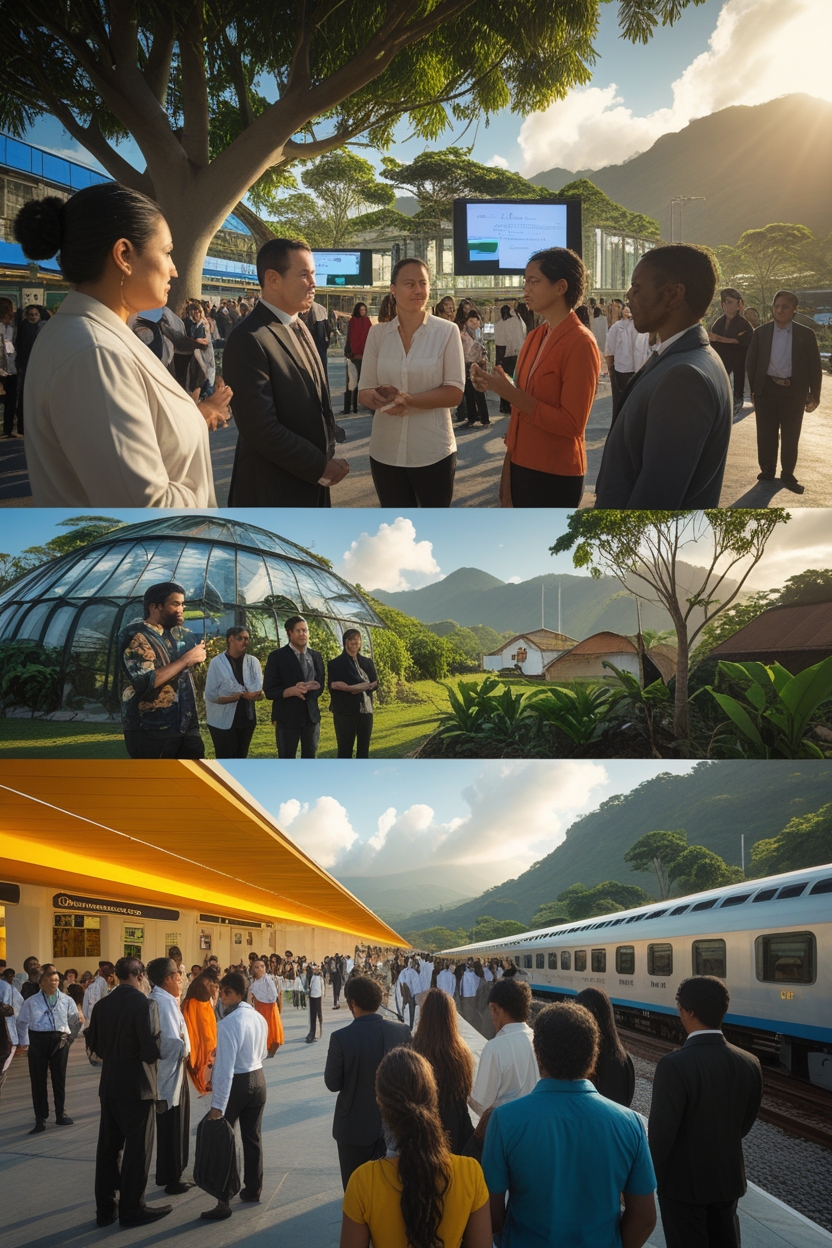
Key Takeaways
- International observances between 2024-2025 reflect growing urgency around climate action, equality, and wellbeing measurements beyond economic growth.
- Each celebration directly connects to multiple Sustainable Development Goals and serves as an annual checkpoint for global progress.
- Comparing these observances across years reveals both encouraging developments and persistent challenges in our pursuit of a more sustainable world.


